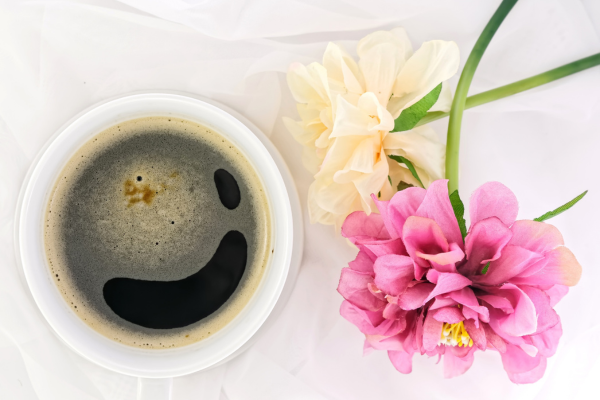If you’ve browsed the shelves of a specialty coffee shop or read the label on a premium bag of beans, you’ve likely come across the term “single-origin coffee.” But what does it really mean, and why are so many coffee lovers passionate about it?
In this article, we’ll explore what single-origin coffee is, how it differs from blends, why it matters for flavor and quality, and how to choose the right one for your taste.
What Is Single-Origin Coffee?
Single-origin coffee comes from one geographic location—usually a specific country, region, or even a single farm or cooperative. This is in contrast to coffee blends, which mix beans from multiple regions or countries to achieve a specific flavor profile.
The more specific the origin, the more traceable and unique the coffee tends to be. For example:
- Country-level: Ethiopia
- Region-level: Huila, Colombia
- Farm-level: Finca El Injerto, Guatemala
Single-origin coffee is often seasonal and limited, harvested at specific times of the year, and reflects the unique characteristics of its terroir (climate, altitude, soil, and farming practices).
How Single-Origin Differs from Coffee Blends
Single-Origin:
- Focuses on purity and expression of a specific region or farm
- Offers unique, often complex flavor notes
- Best suited for those who enjoy exploring new tastes
- Typically roasted lighter to preserve regional nuances
Coffee Blends:
- Combine beans from various origins
- Designed for consistency and balance
- Often used in espresso to achieve a specific body, acidity, and crema
- Usually roasted to complement multiple components
While blends can be excellent for everyday coffee, single-origin beans allow you to explore the depth and diversity of global coffee culture.
Why Single-Origin Coffee Matters
1. Flavor Transparency
Each single-origin coffee tells a flavor story influenced by where it was grown. You might find:
- Ethiopian coffees: Floral, fruity, tea-like
- Colombian coffees: Balanced, sweet, citrusy
- Brazilian coffees: Chocolatey, nutty, low acidity
- Kenyan coffees: Bold, wine-like, with berry notes
These flavors are often masked in blends. With single-origin, you taste the bean’s natural character.
2. Traceability and Ethics
Single-origin coffee usually offers more transparency in sourcing. Labels may list the farm, altitude, processing method, and producer. This traceability:
- Supports direct trade and fairer prices for farmers
- Builds trust between producers and consumers
- Encourages sustainable and high-quality farming
For consumers who value ethical sourcing, single-origin beans provide more insight into where their coffee comes from and how it’s produced.
3. Seasonality and Freshness
Like fresh produce, single-origin coffees follow seasonal harvest cycles. This means:
- You get the freshest beans during peak season
- Each origin becomes available only at certain times of the year
- Rotating origins let you explore new flavors throughout the year
Buying seasonally keeps your coffee experience exciting and diverse.
Processing Methods and Flavor Impact
Single-origin coffees often highlight how processing methods influence flavor. Common methods include:
- Washed (wet): Clean, bright, and crisp
- Natural (dry): Fruity, sweet, heavier body
- Honey (semi-washed): Balanced between clean and sweet
Since these coffees are not blended, the nuances of processing are more pronounced.
Brewing Single-Origin Coffee
To fully appreciate the flavor complexity of single-origin beans, use brewing methods that preserve clarity and detail:
- Pour-over (V60, Chemex): Highlights acidity and subtle flavors
- Aeropress: Offers a clean, versatile profile
- French press: Emphasizes body and mouthfeel
- Espresso: Can bring out intense brightness or sweetness, but may require dialing in carefully
Avoid overpowering add-ins (like heavy cream or flavored syrups) when trying a new single-origin—let the coffee speak for itself.
How to Choose a Single-Origin Coffee
When selecting a single-origin, consider:
- Flavor Notes: Look for terms like “berry,” “caramel,” or “floral” on the label.
- Roast Level: Most single-origins are lightly roasted to highlight regional flavors.
- Region: Choose based on general flavor profiles:
- Central America: Balanced and sweet
- Africa: Bright and fruity
- South America: Nutty and smooth
- Asia-Pacific: Earthy and bold
- Processing Method: Washed for clean cups, natural for sweet and fruity, honey for something in between.
Don’t be afraid to experiment! The beauty of single-origin coffee is in its diversity.
Is Single-Origin Coffee Better?
“Better” is subjective. Single-origin coffee offers:
- More distinct flavors
- Greater traceability
- Stronger connection to origin and farmers
However, blends have their place—especially when consistency and versatility are priorities. The key is to match your choice to your personal taste and brewing style.
Final Thoughts: Explore the World Through Coffee
Single-origin coffee is an invitation to travel the globe without leaving your kitchen. Every cup offers a glimpse into the climate, soil, and culture of its origin. Whether you’re chasing fruity Ethiopian beans or chocolatey Guatemalan coffee, single-origin is your gateway to a richer, more intentional coffee experience.
Explore, taste, take notes, and enjoy the journey—one origin at a time.

